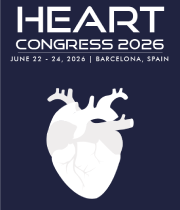Title : Characterizing cardiac ECG and echocardiographic abnormalities in cirrhotic patients with and without heart failure
Abstract:
Background: Liver cirrhosis is associated with characteristic Electrocardiographic (ECG) and cardiac structural abnormalities, including QTc prolongation and low voltage. In those with heart disease, these changes are often encompassed under the entity of cirrhotic cardiomyopathy, a condition marked by subclinical cardiac dysfunction in the setting of chronic liver disease. However, cirrhotic cardiomyopathy may occur in the absence of overt Heart Failure (HF), and limited data exist on the additive cardiac impact of comorbid HF in patients with cirrhosis and how it manifests on ECG and echocardiogram.
Methods: We conducted a retrospective cohort study of 154 patients with cirrhosis, including 58 with clinically diagnosed HF (HFpEF: n=32; HFrEF: n=26) and 96 without HF. Electrocardiographic and echocardiographic parameters were systematically compared between groups using independent t-tests for continuous variables and chi-squared tests for categorical variables.
Results: Cirrhotic patients with HF had significantly longer QTc intervals (445.1 ms vs 431.7 ms, p = 0.018) and were more likely to meet long QTc criteria (37.9% vs 20.2%, p = 0.028). The proportion of cirrhotic patients with heart failure who met low voltage criteria in limb leads (32.8% vs 20.2%, p = 0.123) and precordial leads (31.0% vs 27.7%, p = 0.794) was not significantly different from those without heart failure. Atrial fibrillation was markedly more prevalent in the HF group (53.4% vs 16.0%, p < 0.001) and PR intervals were prolonged in patients with heart failure (182.1 ms vs 161.0 ms, p = 0.0035). No significant differences were observed in the P/QRS/T axes, nor the prevalence of T-wave abnormalities and ST changes.
Left atrial enlargement was more common in the HF group (46.6% vs 28.7%, p = 0.040), as was left ventricular hypertrophy (58.6% vs 30.9%, p = 0.0013). Patients with HF also had lower ejection fraction (54.0% vs 61.4%, p = 0.0014). Pericardial effusion (13.8% vs 3.2%, p = 0.033) and pleural effusion (20.7% vs 8.3%, p = 0.050) were significantly more frequent in the HF group. No significant differences were observed in the proportion of patients with ascites or peripheral edema.
Conclusion: Cirrhotic patients with concomitant HF demonstrate potentially additive electrophysiologic and structural cardiac abnormalities, including prolonged repolarization, atrial arrhythmias, AV conduction delay, and atrioventricular remodelling compared to those without HF. These results underscore the importance of enhanced cardiac monitoring in cirrhotic patients with HF, a population not well characterized in existing literature.



